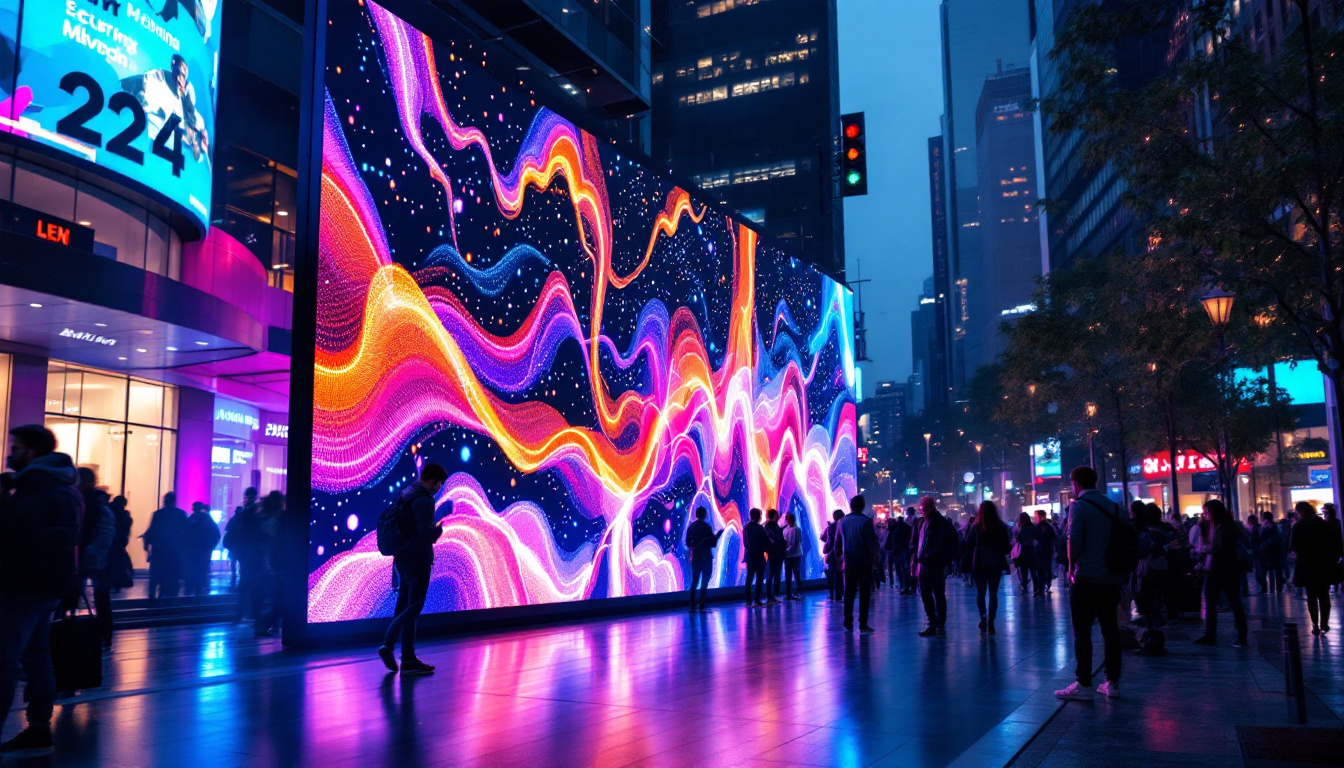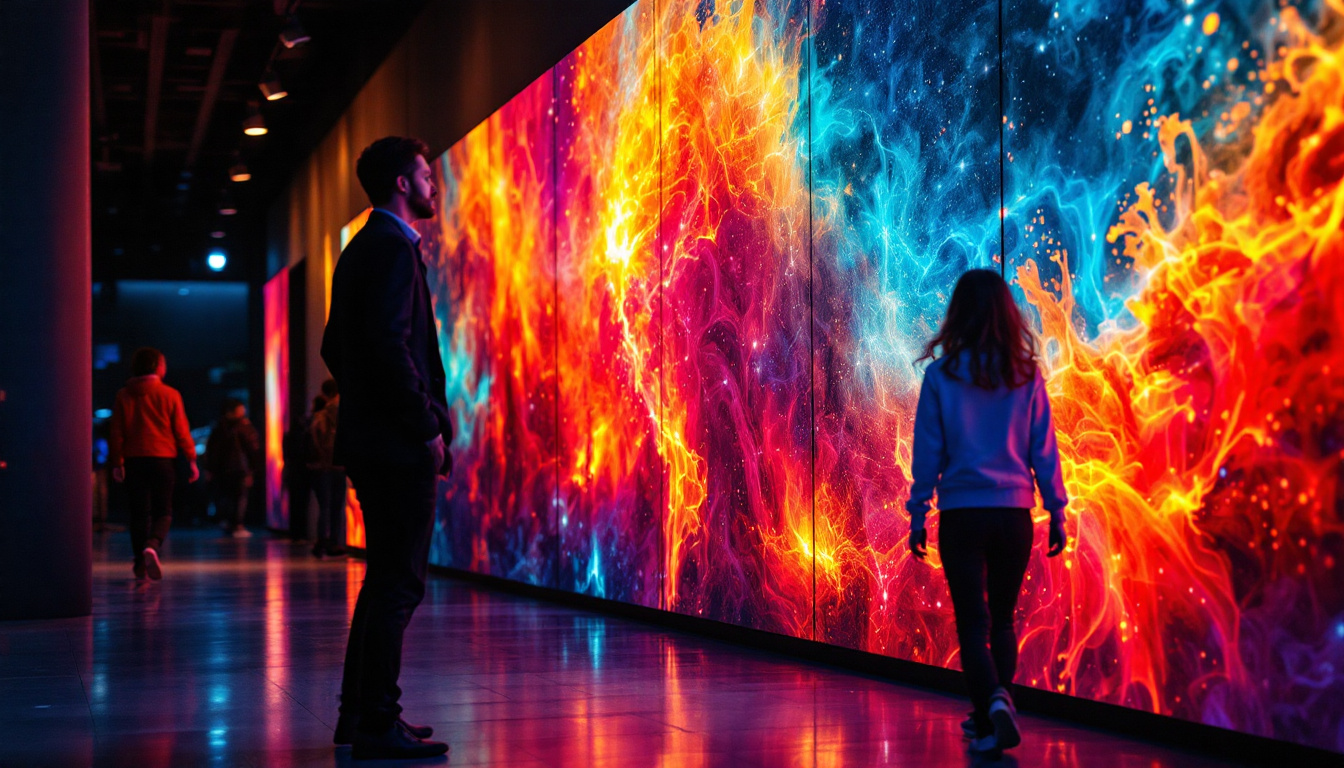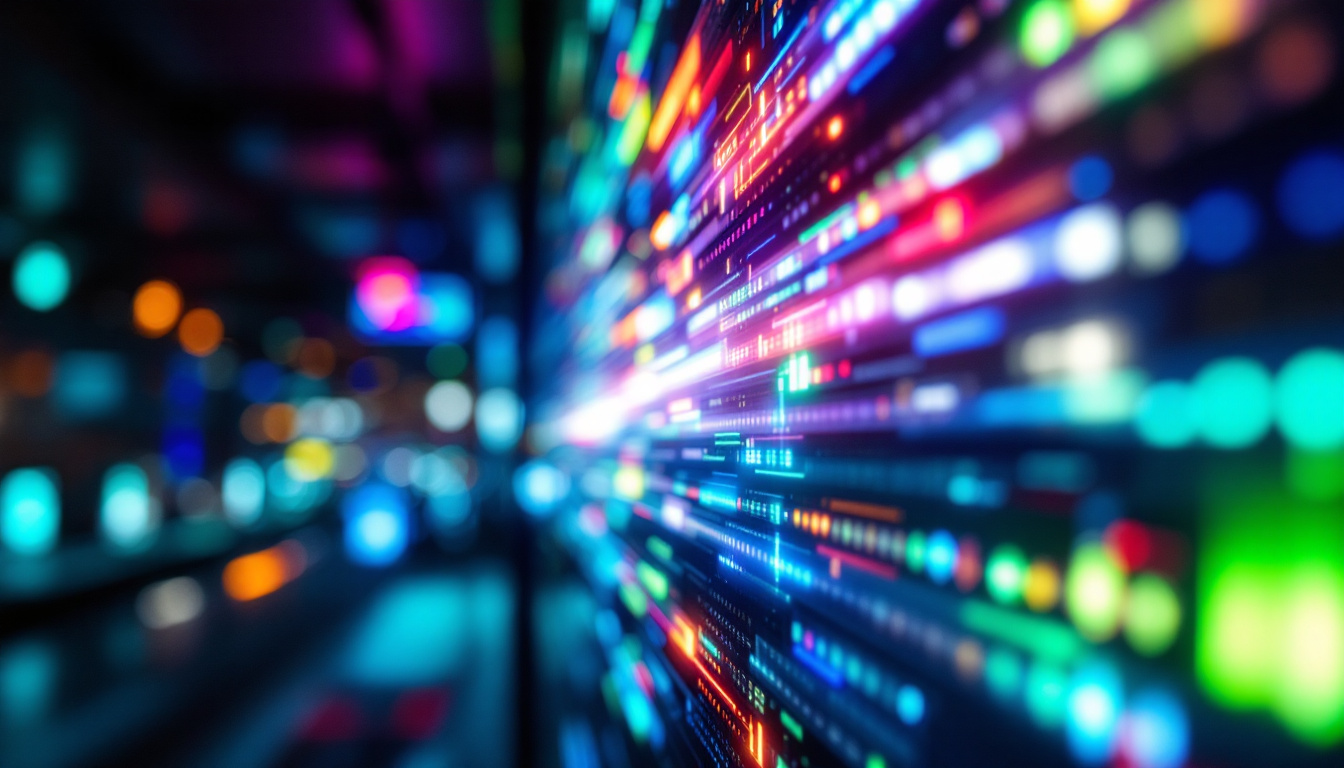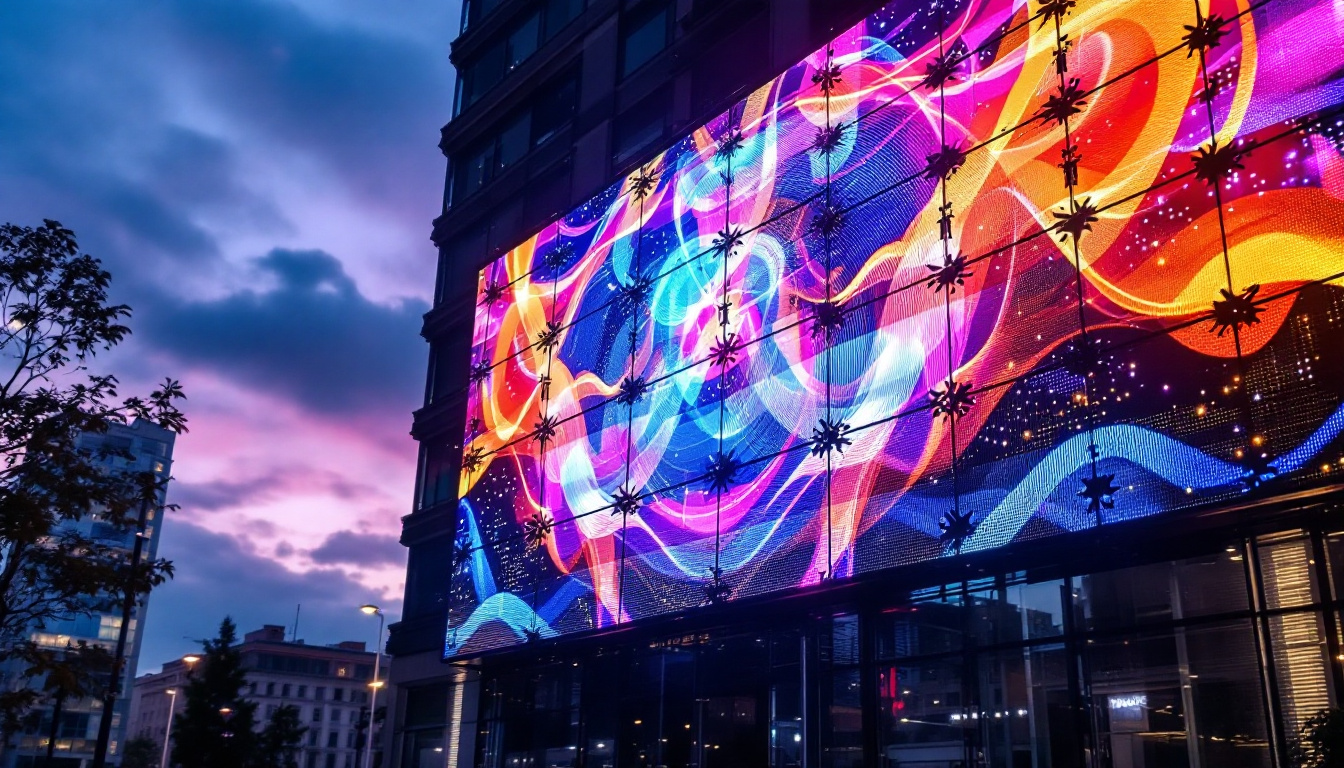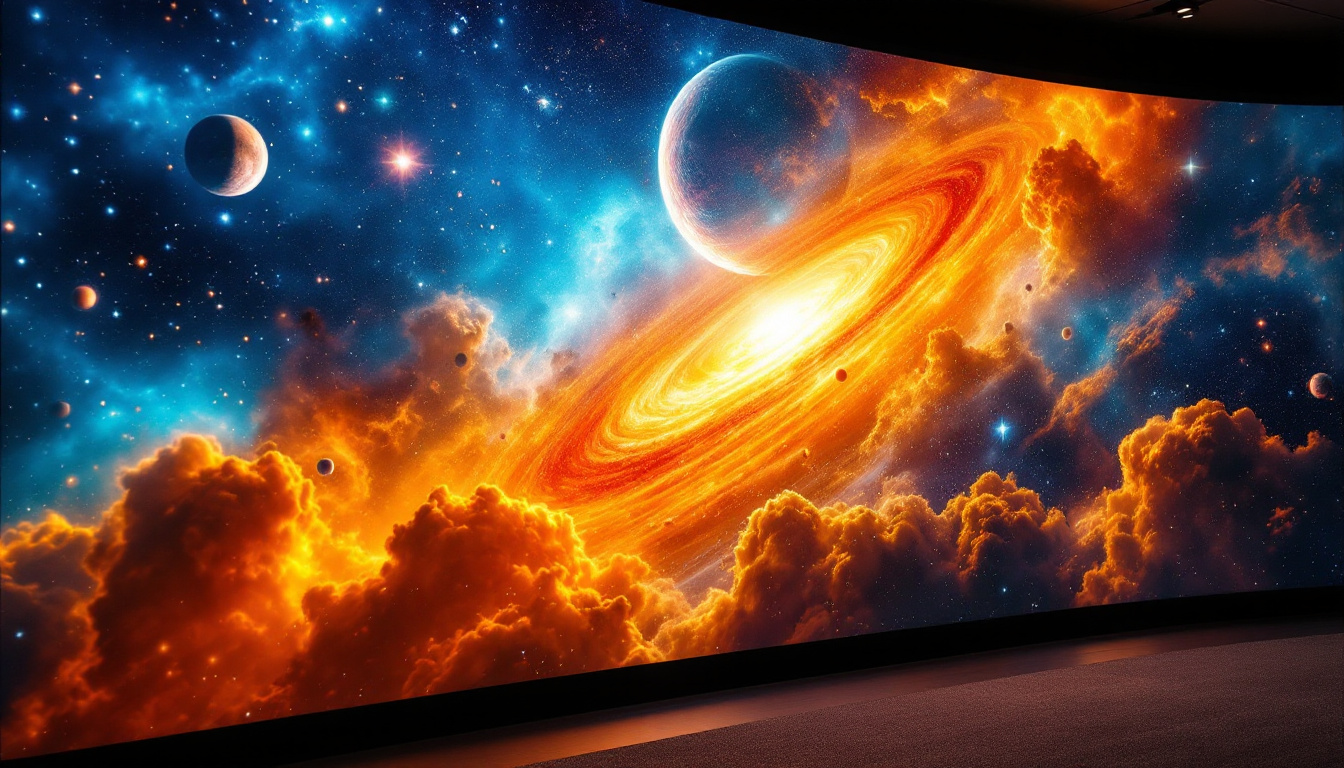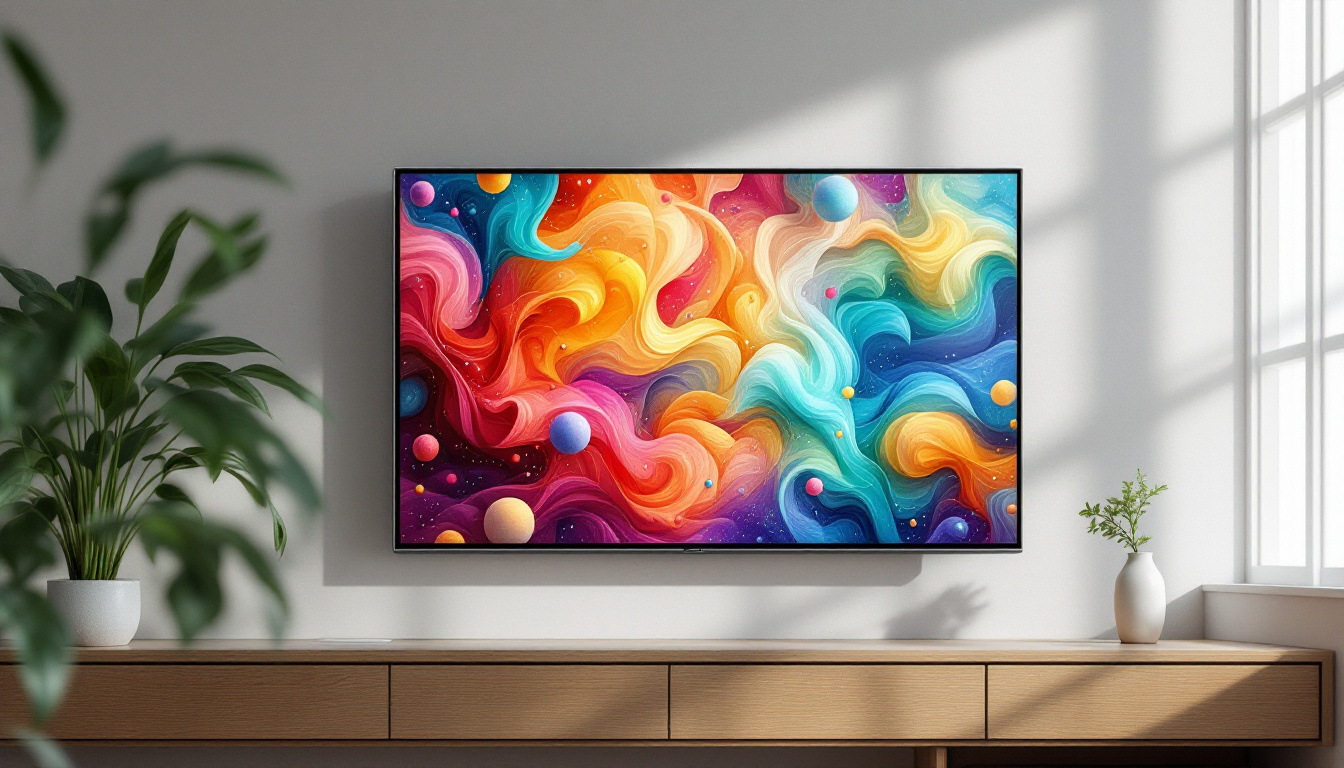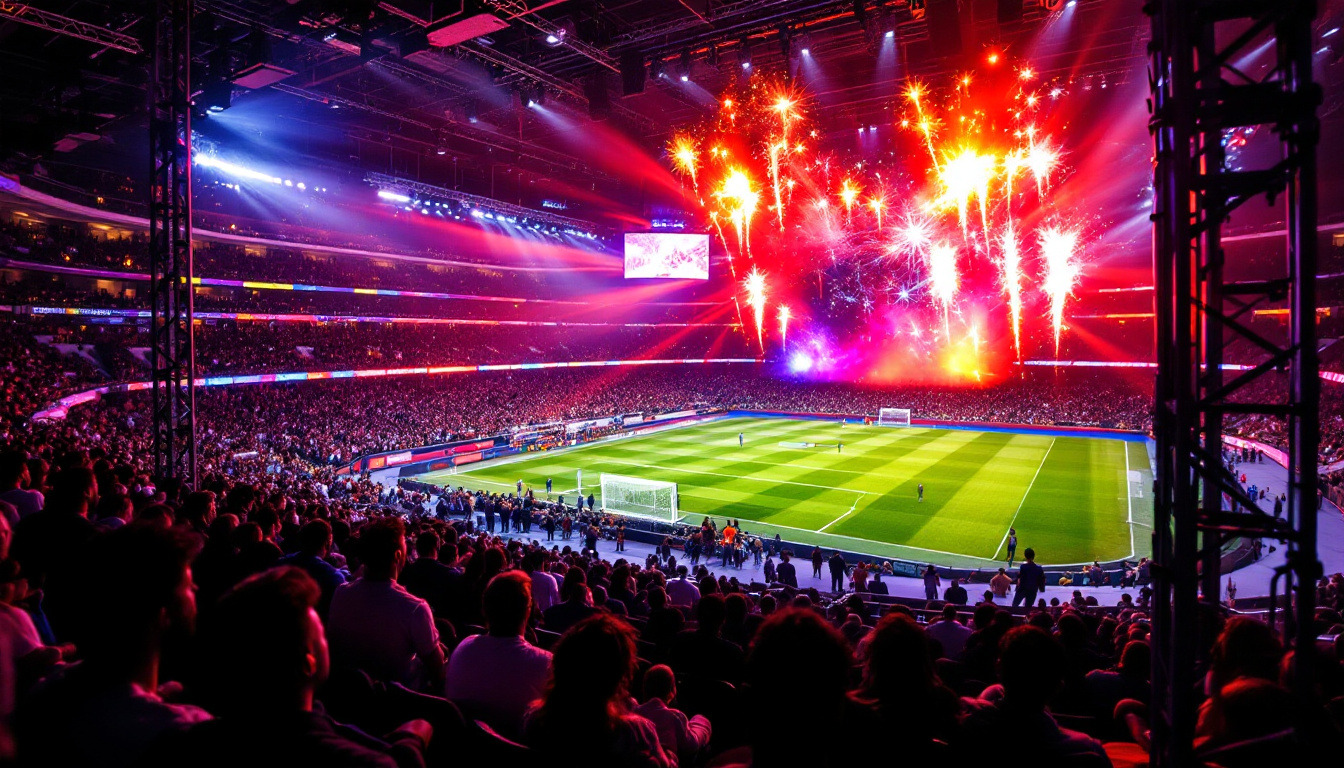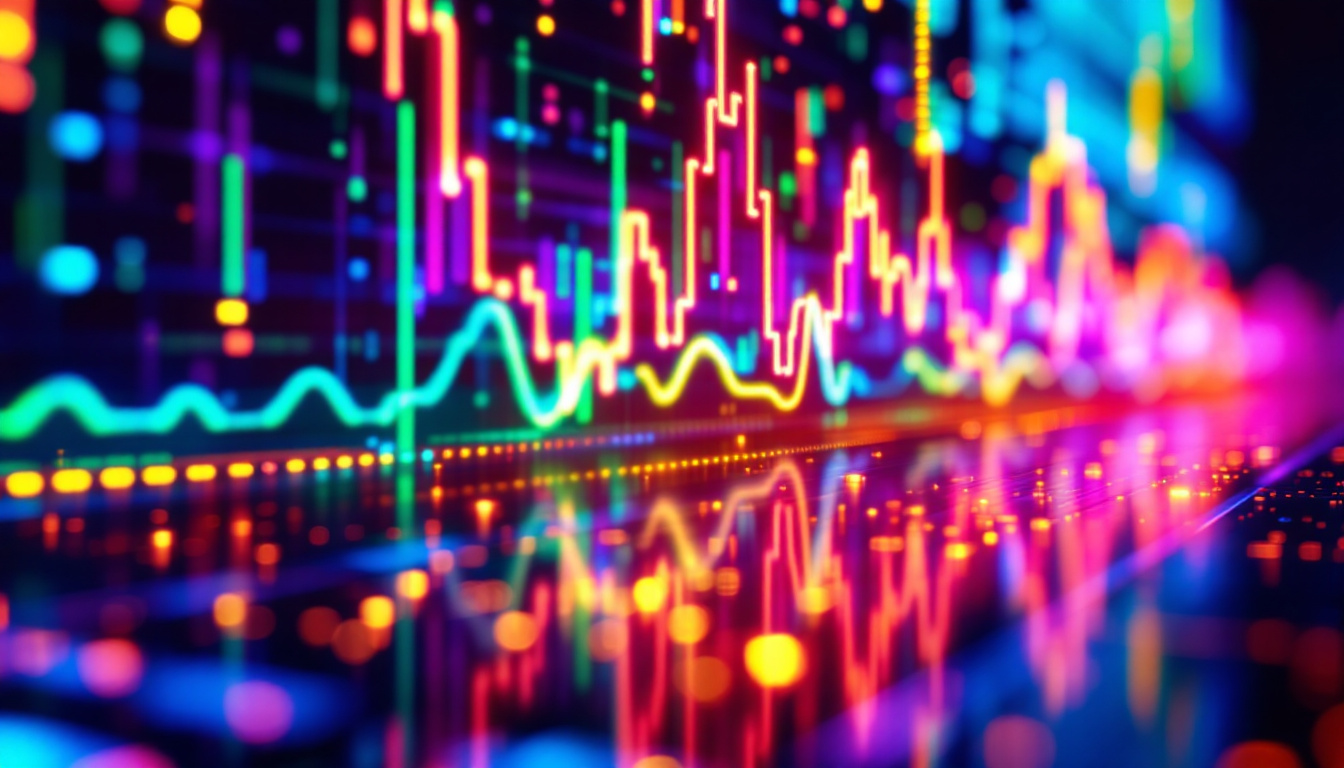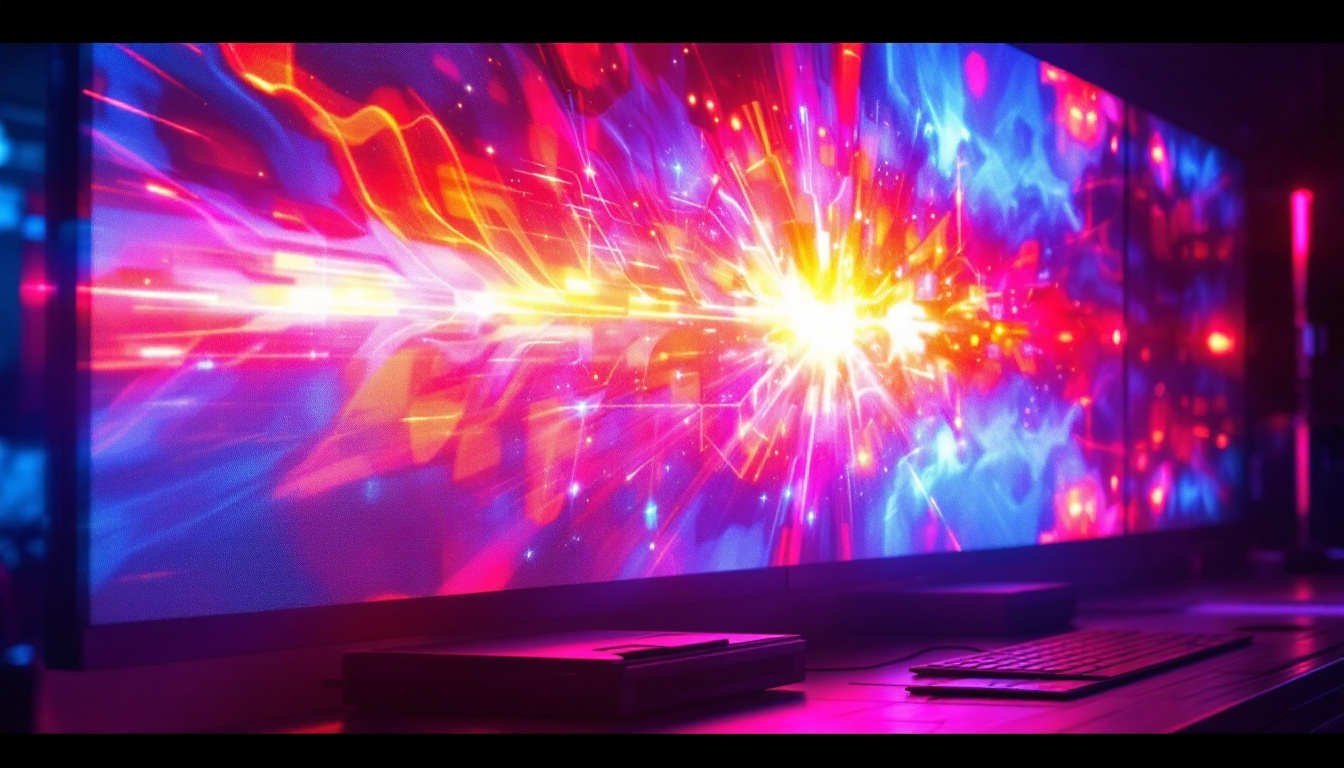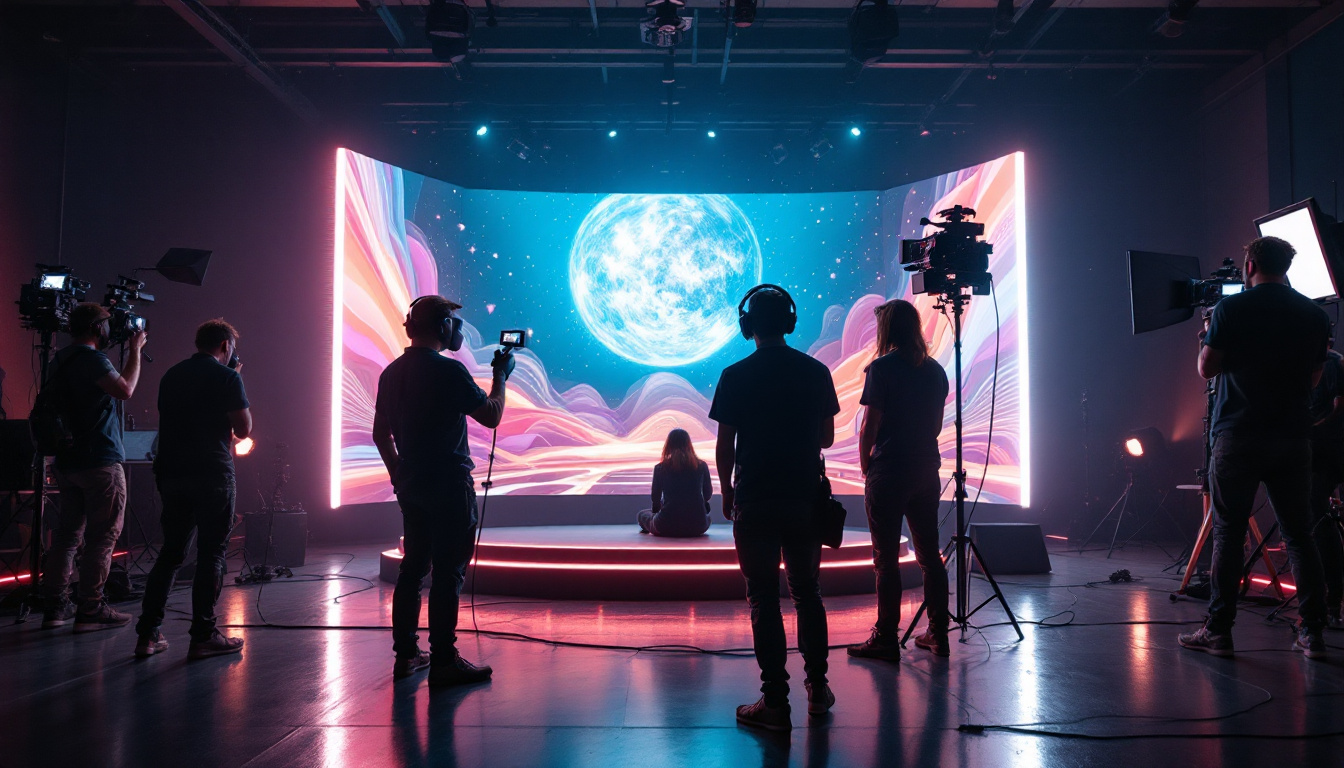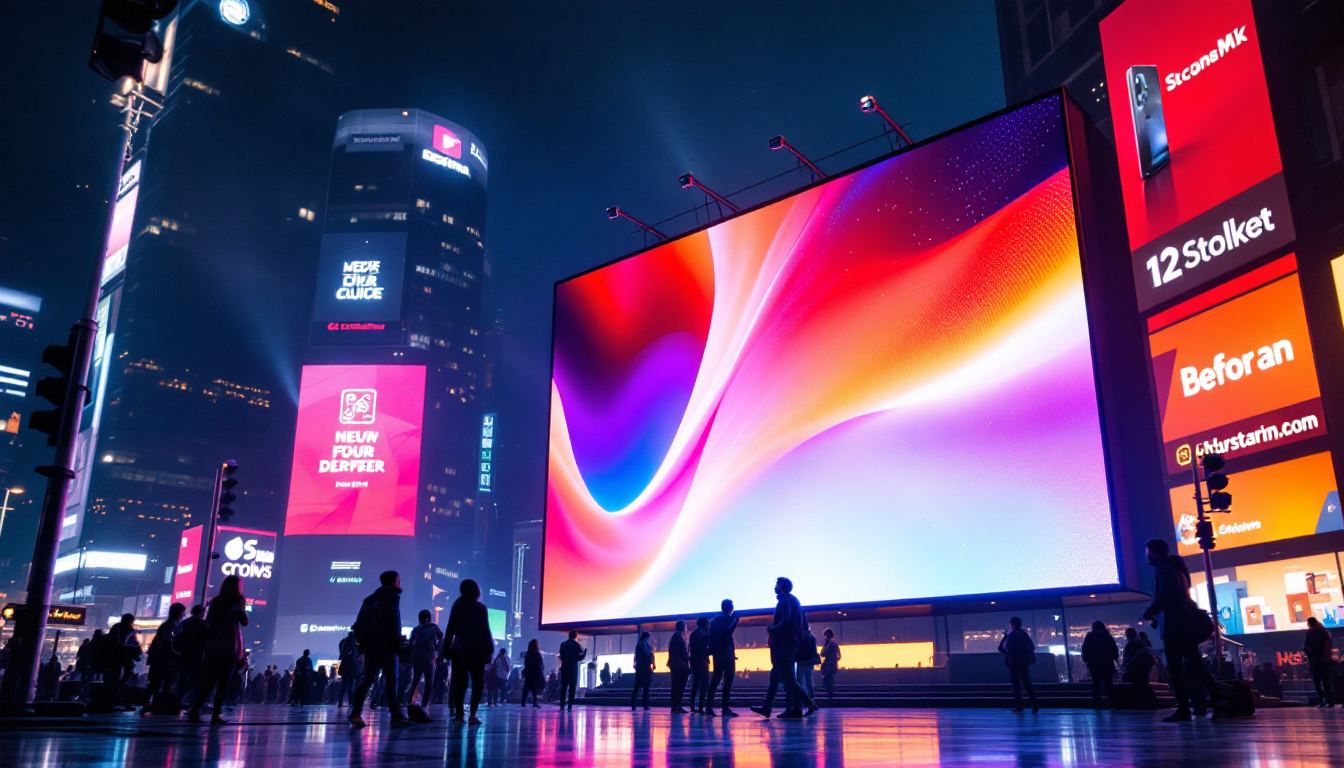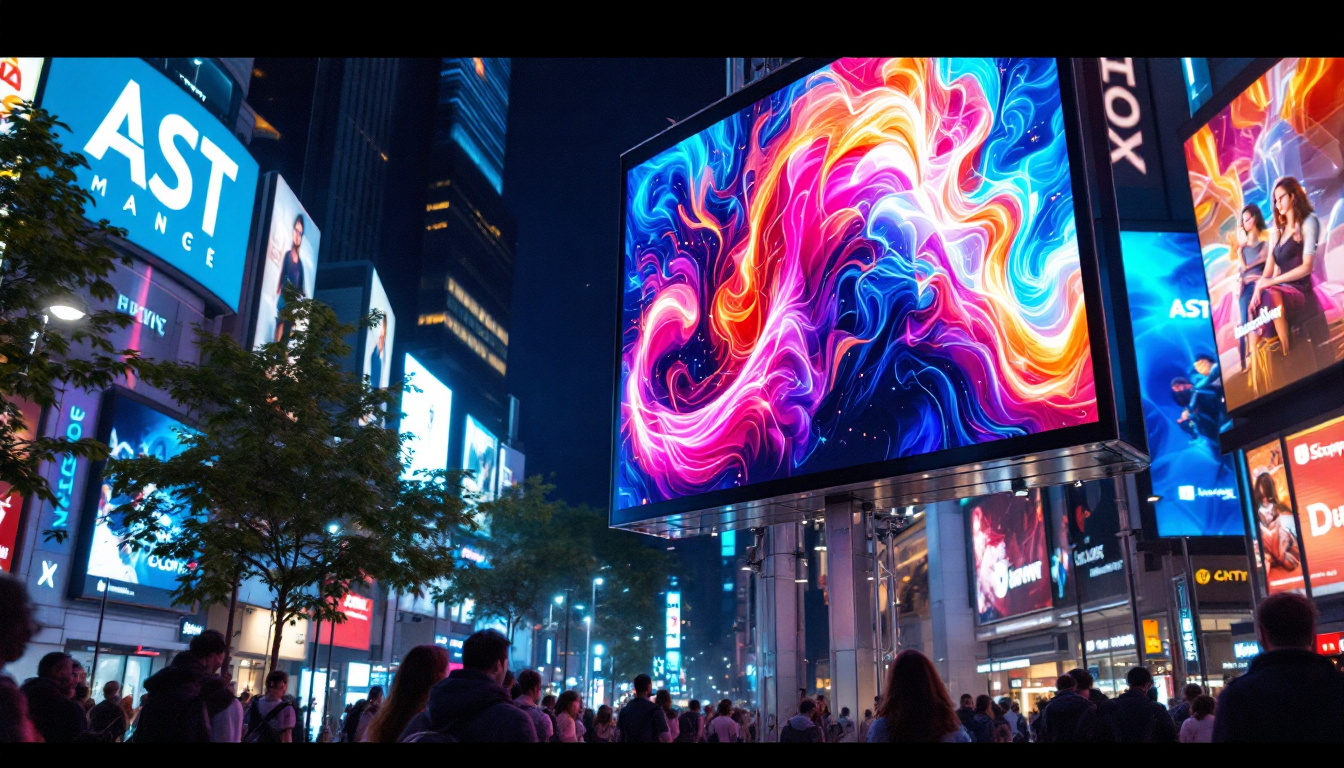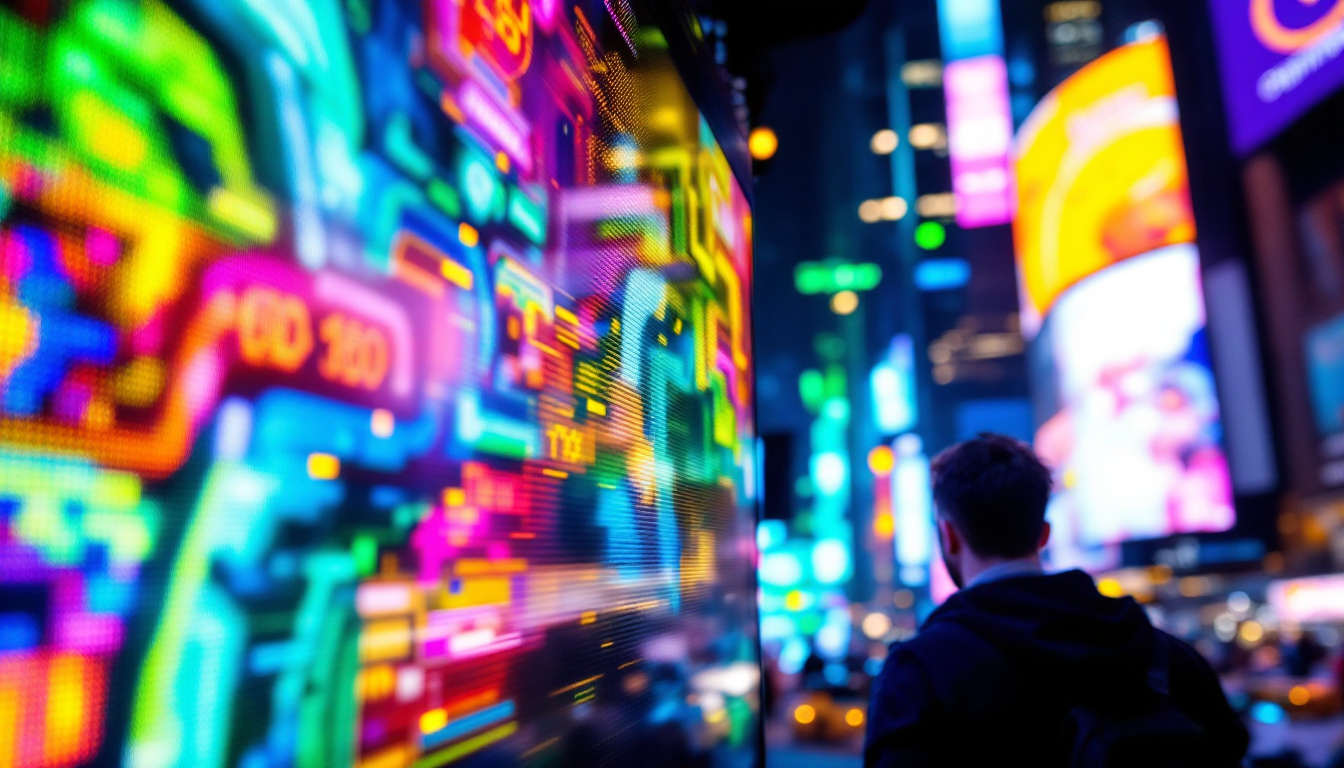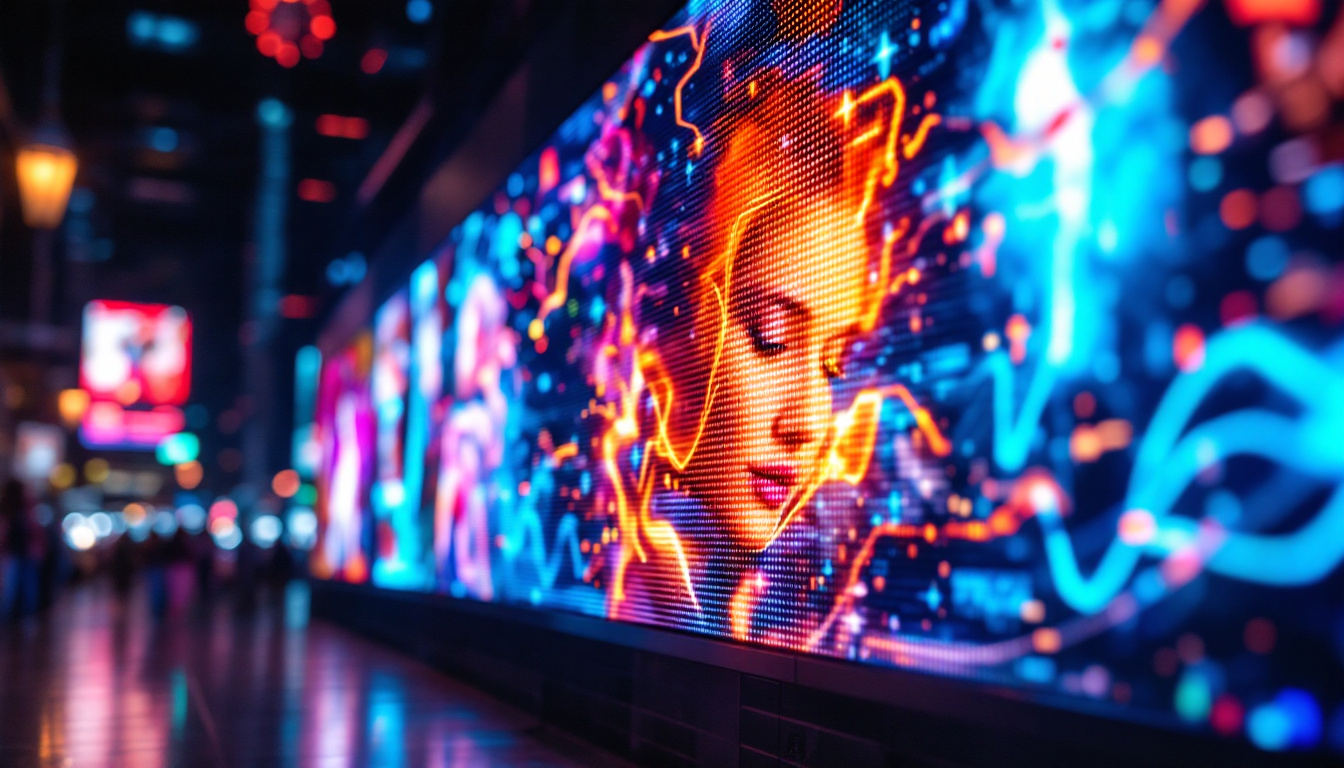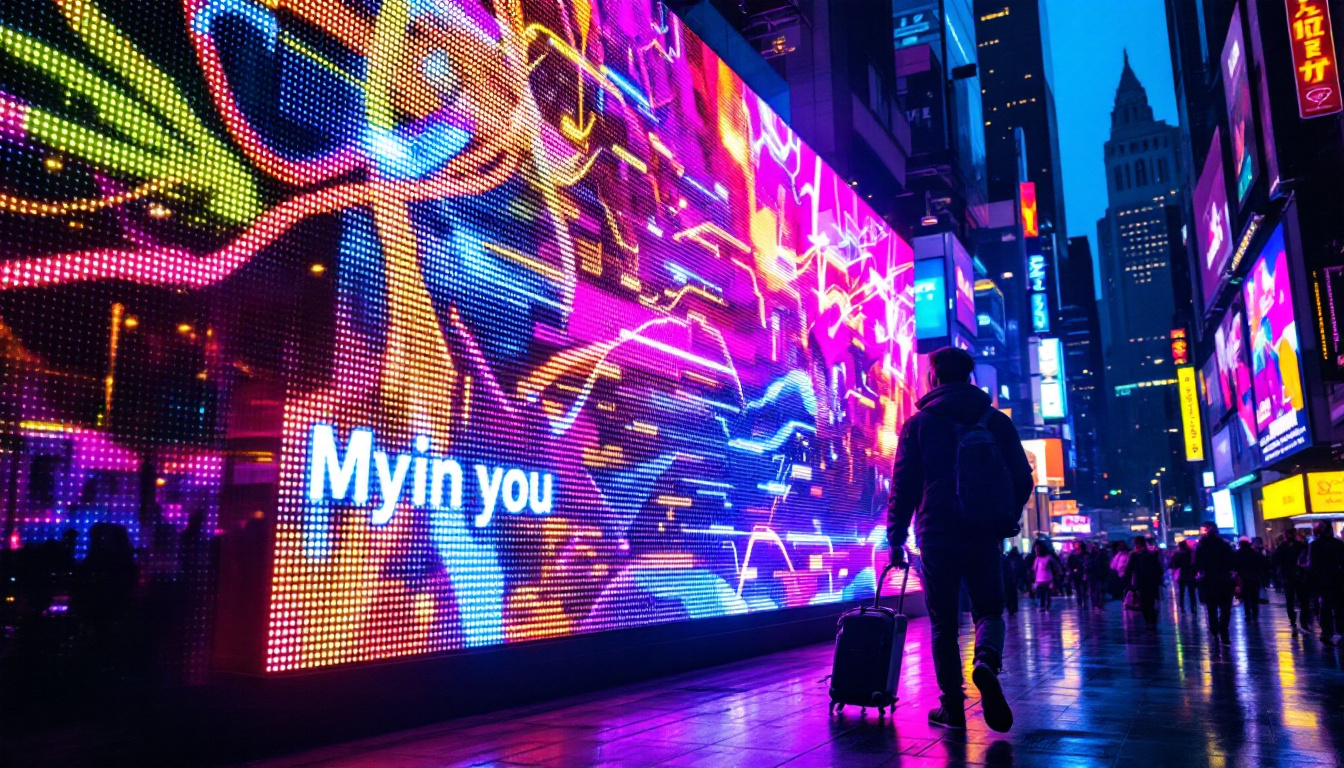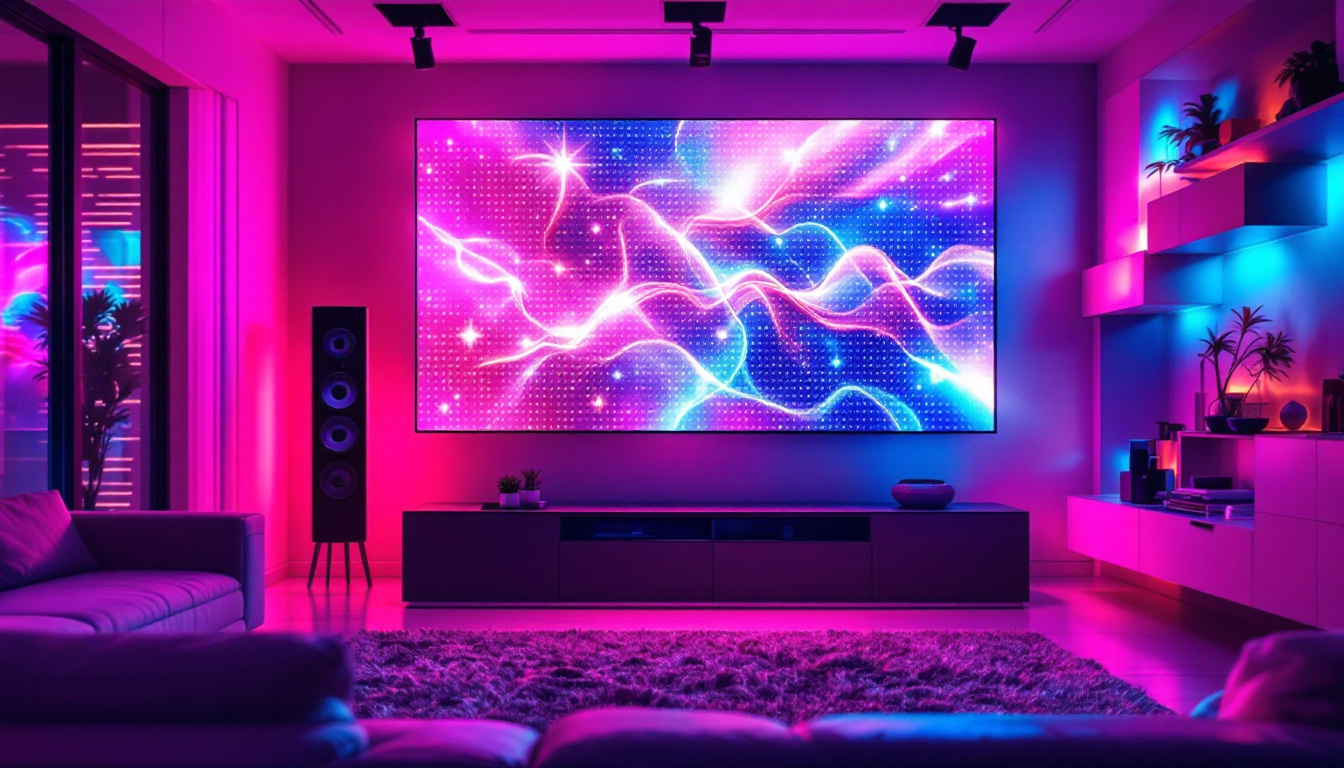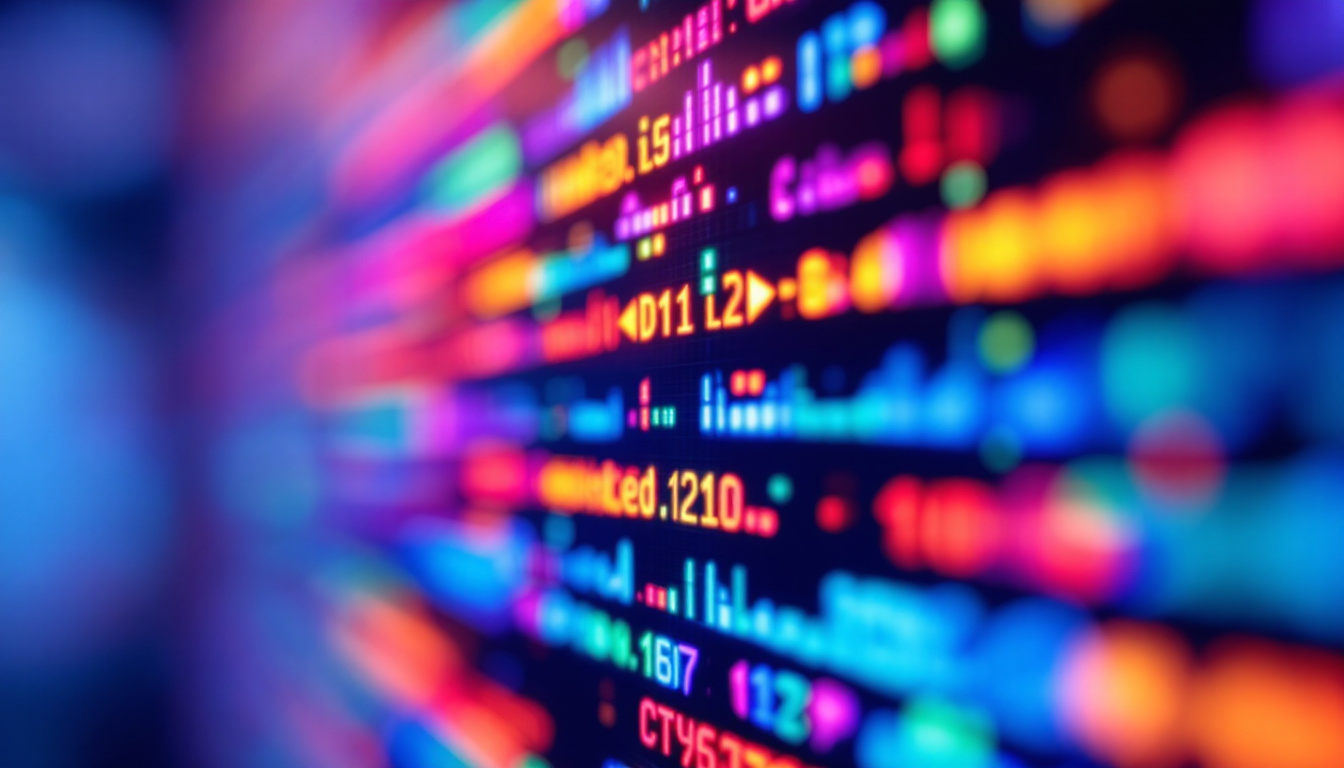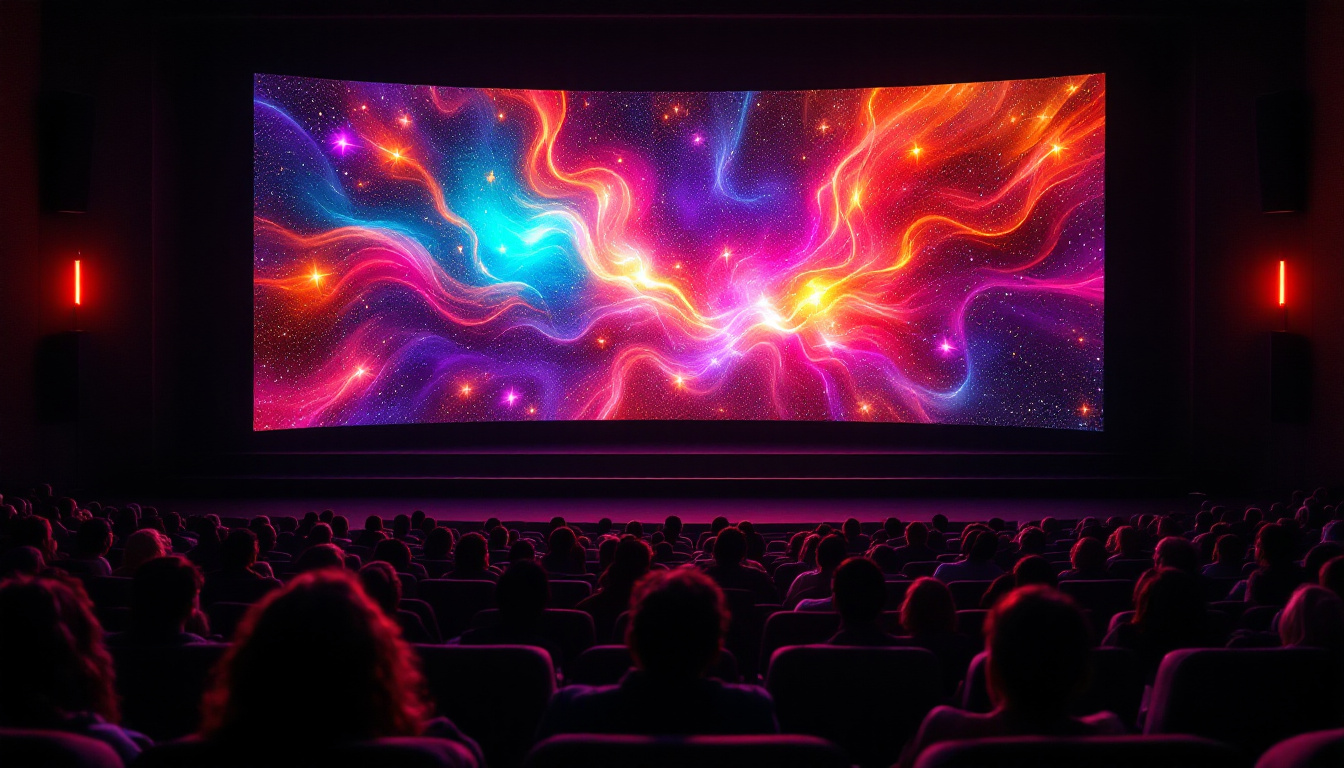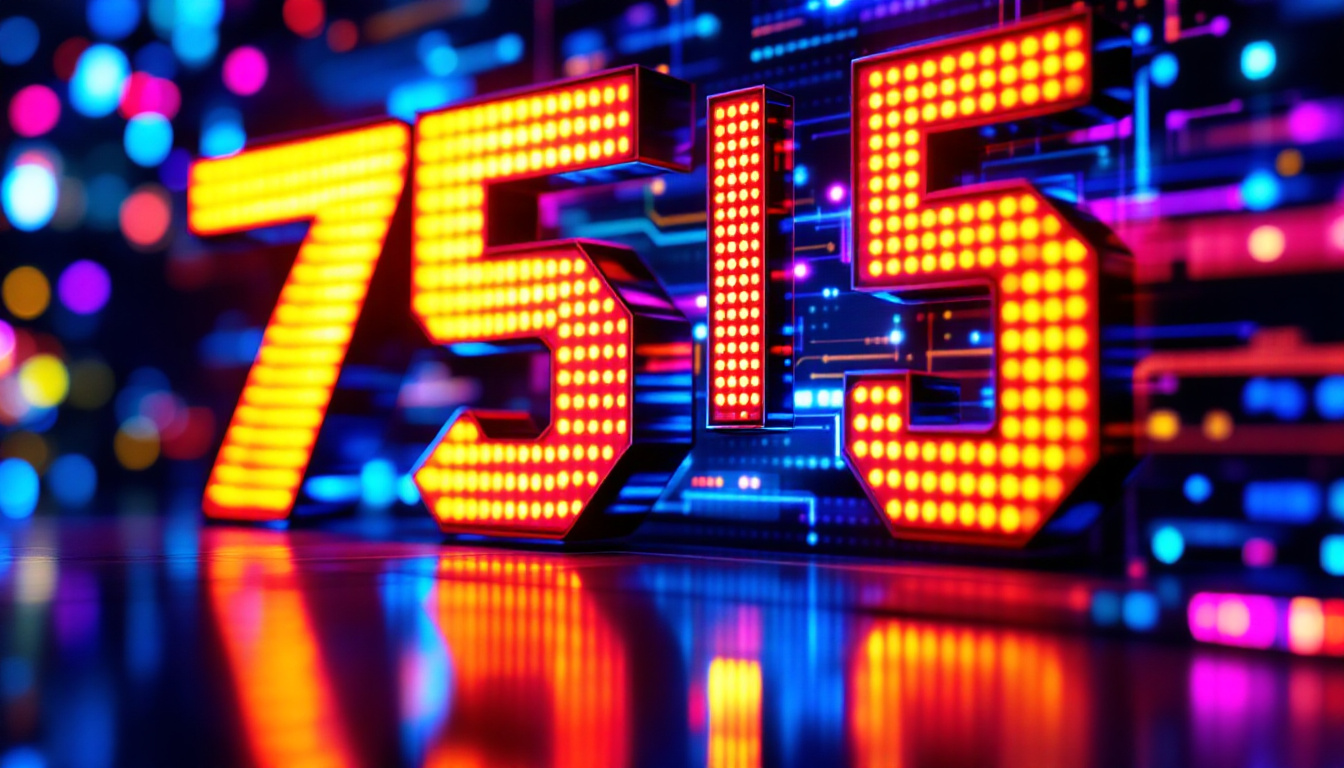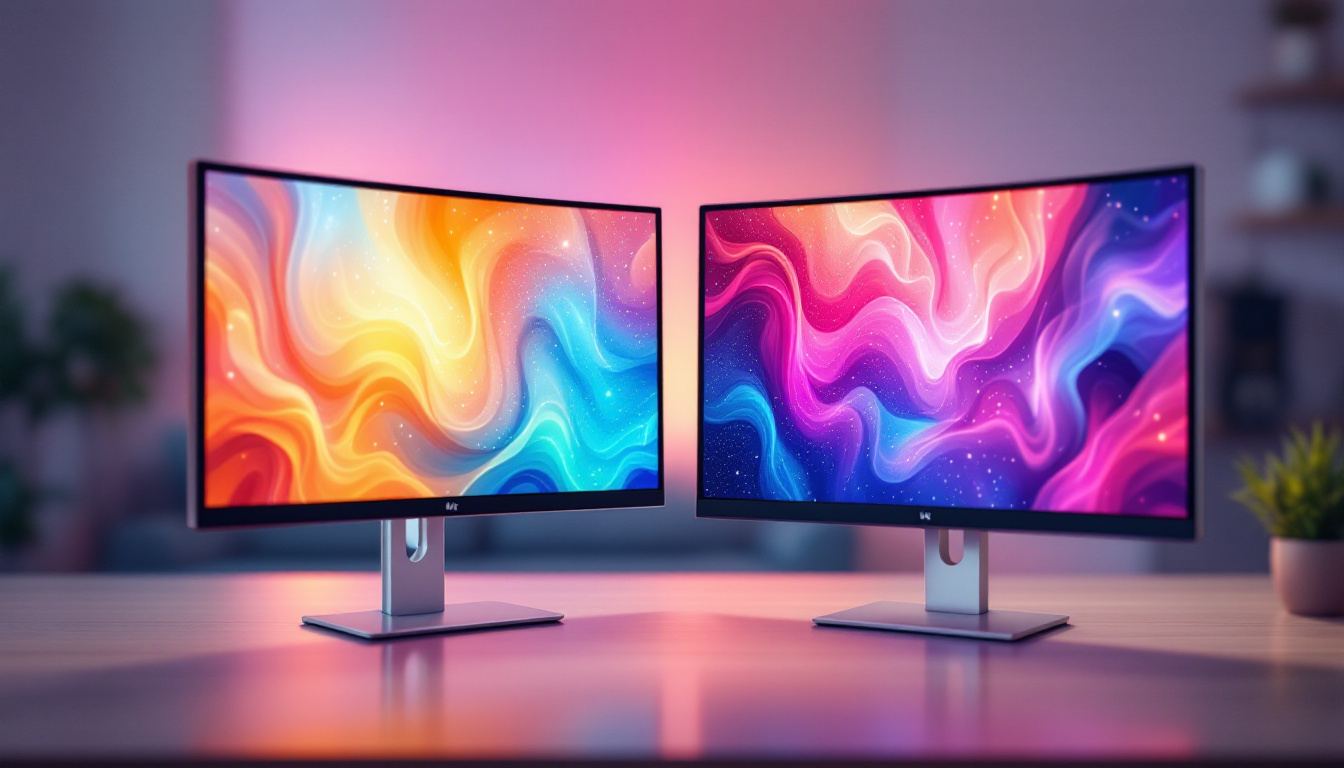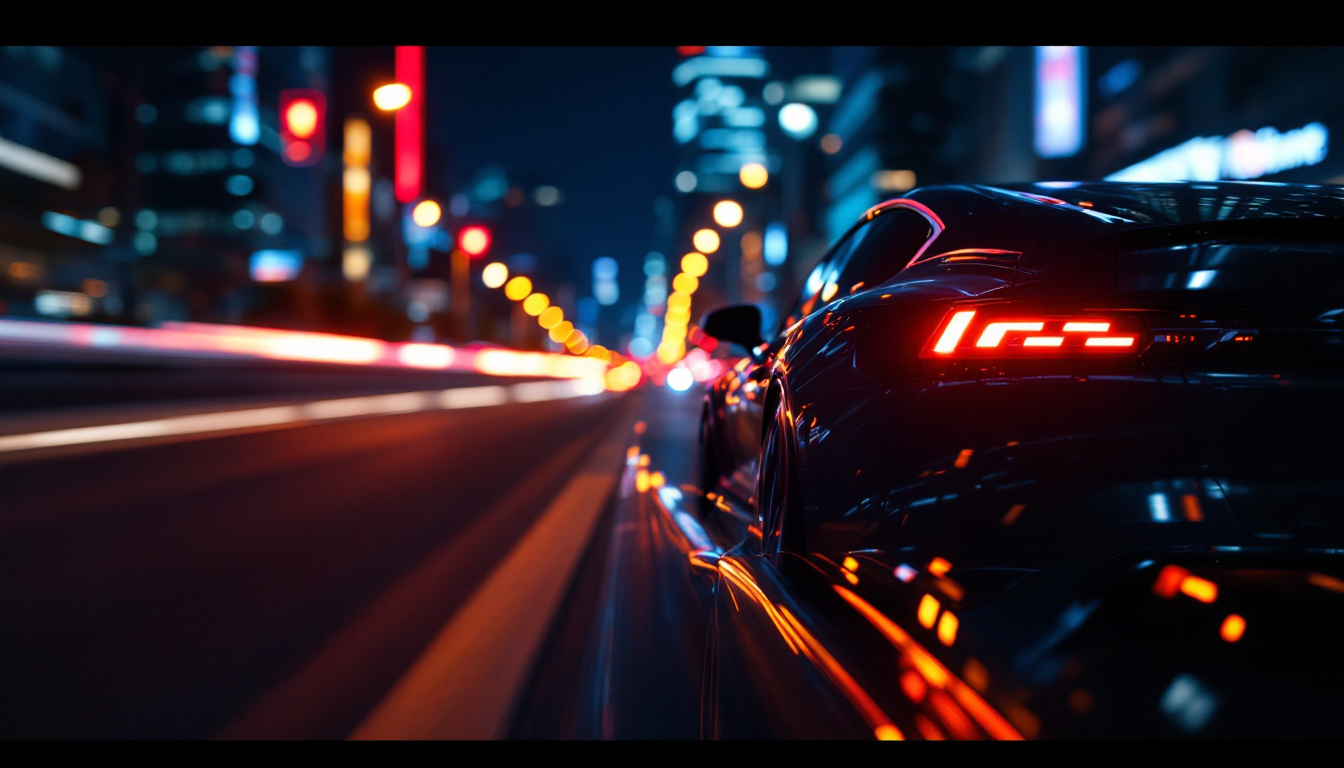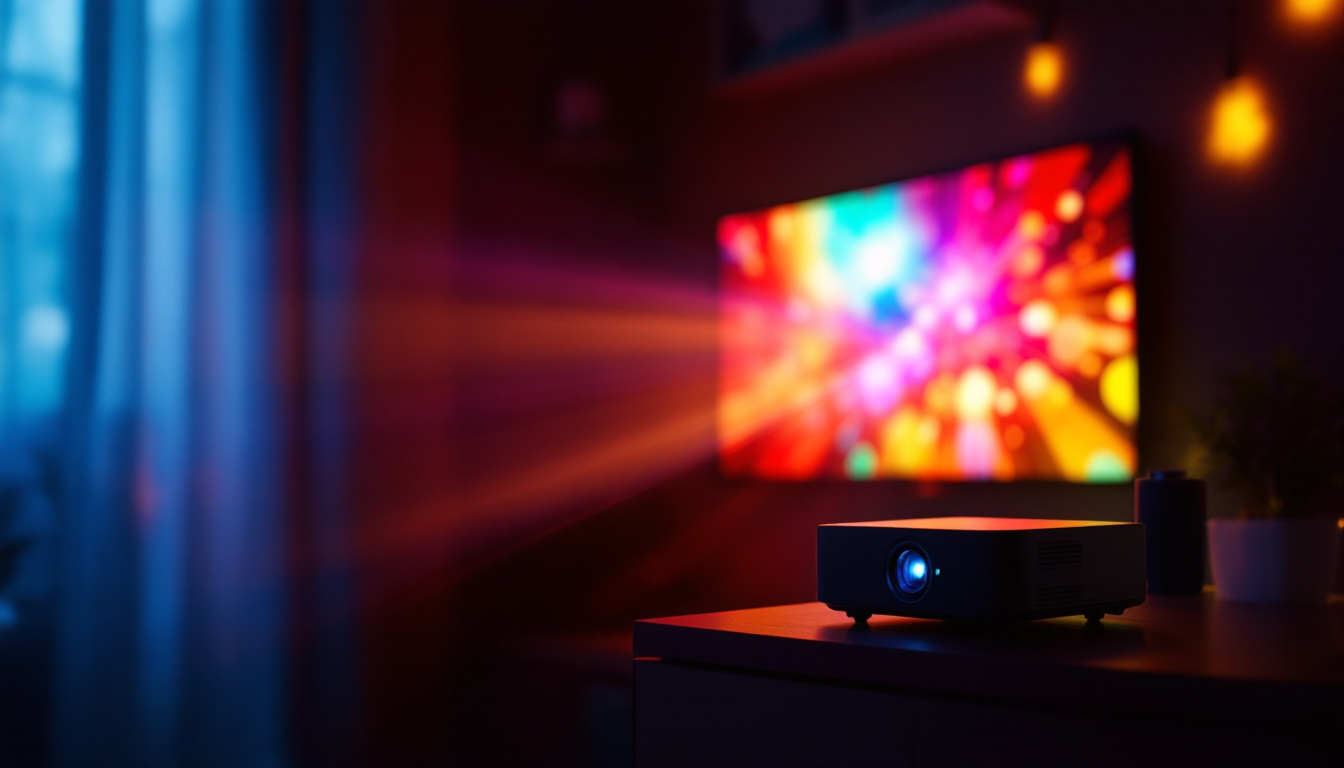In recent years, LED displays have revolutionized the way information is presented in various sectors, from advertising to entertainment and beyond. Their versatility, energy efficiency, and vibrant color output have made them a preferred choice for businesses and organizations looking to capture attention and convey messages effectively. This article delves into the intricacies of LED displays, exploring their technology, applications, and the factors that contribute to their widespread adoption.
Understanding LED Technology
Light Emitting Diodes (LEDs) are semiconductor devices that emit light when an electric current passes through them. Unlike traditional incandescent bulbs, which produce light through heating a filament, LEDs generate light in a much more efficient manner. This fundamental difference in technology is what makes LEDs a superior choice for display applications.
The Basics of LED Operation
At the core of LED technology is the principle of electroluminescence. When electrons recombine with holes within the device, energy is released in the form of photons, producing light. The color of the emitted light is determined by the materials used in the semiconductor. For instance, different combinations of gallium, arsenide, and phosphor can create a spectrum of colors, making it possible to design displays that are not only bright but also colorful.
Moreover, the compact size of LEDs allows for greater flexibility in design. This means that LED displays can be made in various shapes and sizes, accommodating a wide range of applications, from large outdoor billboards to small screens in handheld devices.
Types of LED Displays
LED displays come in various types, each suited for specific applications. The most common types include:
- Direct View LED Displays: These displays consist of individual LED modules that can be arranged to form larger screens. They are often used for outdoor advertising and large events.
- LED Video Walls: Comprising multiple LED panels, these displays create a seamless image that can be used for concerts, sports events, and corporate presentations.
- LED Backlit Displays: Used primarily in televisions and monitors, these displays utilize LEDs as a backlight to enhance the brightness and color accuracy of LCD screens.
Applications of LED Displays
The versatility of LED displays has led to their adoption across a multitude of industries. Their ability to deliver high-quality visuals in various environments makes them an invaluable tool for communication and advertising.
Advertising and Marketing
One of the most prominent applications of LED displays is in advertising. Businesses leverage the dynamic capabilities of LED technology to create eye-catching advertisements that can be changed in real-time. This flexibility allows for targeted marketing strategies, where different messages can be displayed at different times, maximizing engagement with potential customers.
Outdoor LED billboards, for instance, can showcase multiple advertisements throughout the day, reaching a wider audience without the need for physical materials. This not only reduces costs but also minimizes environmental impact.
Entertainment and Events
In the entertainment industry, LED displays have become essential for concerts, festivals, and sports events. Their ability to produce bright, vibrant visuals ensures that audiences have an immersive experience, regardless of their distance from the stage or screen. LED video walls can be configured to create stunning visual effects, enhancing performances and engaging viewers.
Additionally, LED displays are commonly used in theaters and cinemas, where they can serve as backdrops or interactive elements within a production, further blurring the lines between reality and performance.
Information and Communication
Beyond advertising and entertainment, LED displays play a crucial role in information dissemination. Transportation hubs, such as airports and train stations, utilize LED screens to provide real-time updates on schedules, delays, and other essential information. Their visibility and clarity ensure that travelers can easily access the information they need.
In corporate settings, LED displays are used for presentations, meetings, and internal communications. They can display data, charts, and videos, making it easier for teams to collaborate and share information effectively.
Advantages of LED Displays
The growing popularity of LED displays can be attributed to several advantages they offer over traditional display technologies. Understanding these benefits can help businesses and organizations make informed decisions about their display needs.
Energy Efficiency
One of the standout features of LED technology is its energy efficiency. LED displays consume significantly less power compared to traditional LCD or plasma screens. This not only translates to lower electricity bills but also contributes to a reduced carbon footprint, making LEDs a more environmentally friendly option.
Furthermore, the longevity of LEDs means that they require less frequent replacements, further enhancing their cost-effectiveness over time. Many LED displays have a lifespan of over 50,000 hours, making them a reliable investment for businesses.
Brightness and Visibility
LED displays are known for their exceptional brightness, which makes them visible even in direct sunlight. This characteristic is particularly important for outdoor applications, where visibility can be compromised by ambient light. The high contrast ratios offered by LED technology also enhance the clarity of images and text, ensuring that messages are conveyed effectively.
Additionally, the wide viewing angles of LED displays allow for greater audience engagement, as viewers can see the content clearly from various positions without distortion or color fading.
Customization and Flexibility
LED displays can be customized to fit specific needs and preferences. From size and shape to content and design, businesses have the flexibility to create displays that resonate with their target audience. This adaptability is particularly beneficial for events and promotions, where unique and engaging visuals can make a significant impact.
Moreover, advancements in technology have led to the development of flexible LED displays that can be bent or shaped to fit unconventional spaces, opening up new possibilities for creative installations.
Challenges and Considerations
While LED displays offer numerous advantages, there are also challenges and considerations that potential users should be aware of. Understanding these factors can help organizations make informed decisions about their display investments.
Initial Costs
One of the primary challenges associated with LED displays is the initial investment. Although prices have decreased over the years, high-quality LED displays can still represent a significant upfront cost. Businesses must weigh this investment against the long-term savings and benefits that LED technology provides.
It is essential to consider the total cost of ownership, which includes maintenance, energy consumption, and potential revenue generation through advertising or enhanced customer engagement.
Technical Expertise
Implementing LED displays may require technical expertise, particularly for installation and maintenance. Organizations may need to invest in training for staff or hire external professionals to ensure that displays are set up and functioning correctly. This can add to the overall cost and complexity of the project.
Additionally, as technology evolves, keeping up with the latest advancements and updates may require ongoing training and investment in new equipment.
Content Management
Another consideration is content management. While LED displays offer the flexibility to change messages and visuals easily, creating engaging and effective content requires skill and creativity. Organizations may need to invest in graphic design resources or software to produce high-quality content that resonates with their audience.
Furthermore, ensuring that content is updated regularly and remains relevant can be a challenge, particularly for businesses with multiple display locations or campaigns.
The Future of LED Displays
As technology continues to advance, the future of LED displays looks promising. Innovations in materials, design, and functionality are expected to drive further growth in this sector, expanding the possibilities for businesses and organizations.
Emerging Technologies
One of the most exciting developments in LED technology is the integration of smart features. Smart LED displays can connect to the internet, allowing for real-time content updates, remote management, and data analytics. This connectivity enables businesses to tailor their messaging based on audience behavior and preferences, enhancing engagement and effectiveness.
Additionally, advancements in microLED technology are paving the way for even smaller and more efficient displays. MicroLEDs offer improved resolution, color accuracy, and energy efficiency, making them ideal for high-end applications such as virtual reality and augmented reality.
Sustainability Initiatives
With increasing awareness of environmental issues, the demand for sustainable display solutions is on the rise. Manufacturers are focusing on creating LED displays that are not only energy-efficient but also made from recyclable materials. This shift towards sustainability reflects a broader trend in the industry, where businesses are prioritizing eco-friendly practices.
As consumers become more environmentally conscious, businesses that adopt sustainable technologies are likely to gain a competitive edge in the market.
Expanding Applications
The applications of LED displays are expected to continue expanding into new sectors. From healthcare to education, the potential for LED technology to enhance communication and engagement is vast. For instance, in educational settings, interactive LED displays can facilitate collaborative learning experiences, while in healthcare, they can be used for patient information and engagement.
As industries recognize the benefits of LED displays, the demand for innovative solutions will drive further advancements and adoption, solidifying LEDs as a cornerstone of modern communication.
Conclusion
LED displays have transformed the landscape of visual communication, offering unparalleled advantages in energy efficiency, brightness, and customization. Their applications span a wide range of industries, from advertising to entertainment and information dissemination. While challenges such as initial costs and content management exist, the long-term benefits and advancements in technology are paving the way for a bright future.
As businesses and organizations continue to explore the potential of LED displays, embracing innovations and sustainability initiatives will be key to staying ahead in an ever-evolving market. With the right approach, LED displays can serve as powerful tools for engagement, communication, and brand enhancement.
Discover LumenMatrix’s Innovative LED Solutions
Ready to elevate your visual communication with the latest in LED display technology? Look no further than LumenMatrix, where innovation meets impact. Our extensive range of LED display modules, from Indoor and Outdoor LED Walls to specialized solutions like Vehicle Displays and Transparent LEDs, is designed to captivate your audience and amplify your message. Embrace the future of digital signage with LumenMatrix and experience the power of advanced, energy-efficient, and customizable LED displays. Check out LumenMatrix LED Display Solutions and transform your brand’s visibility today.

